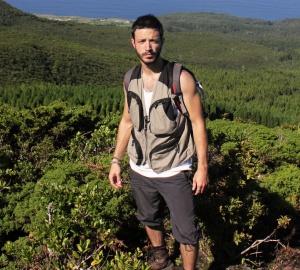Lamelas López, L., Borges, P.A.V., Serrano, L., Gonçalves, V. & Florencio, M. (2021) Biodiversity patterns of macroinvertebrate assemblages in natural and artificial lentic waters on an oceanic island.
Frontiers in Ecology and Evolution,
8, 605176. DOI:10.3389/fevo.2020.605176 (IF2021 4,496; Q2 Ecology)
The Azorean islands have been historically affected by human activities, mainly due to the combined effects of habitat degradation and fragmentation, and the introduction of exotic species. We here aim to analyze the role of environmental characteristics and spatial descriptors in supporting regional biodiversity of macroinvertebrates by considering natural ponds and artificial tanks. After the monthly variation of macroinvertebrate assemblages was assessed in three temporary and two permanent ponds in the Azorean island of Terceira during a complete inundation-desiccation annual cycle, the assemblage differences of 12 ponds (three temporary and nine permanent ponds) and 8 closely-located artificial tanks were analyzed across a range of landscape disturbances. Macroinvertebrate assemblages were found to differ according to hydroperiod and sampled months. Although the former explained the highest variance, macroinvertebrate differentiation by hydroperiod was also dependent on the study month. Our results also revealed a consistent monthly pattern of species replacement. However, the contribution of nestedness to the macroinvertebrate β-diversity was notable when temporary ponds were close to desiccation, probably indicating a deterministic loss of species due to the impoverished water conditions of the ponds facing desiccation. When the macroinvertebrate assemblages were analyzed in relation to physico-chemical variations and spatial descriptors, the artificial tanks were not clearly segregated from the natural ponds, and only differentiated by pH differences. In contrast, those natural ponds exhibiting high concentrations of total phosphorous (likely signs of anthropization) also discriminated the ordination of ponds in a distance-based redundancy analysis, and showed impoverished assemblages in comparison with well-preserved ponds. The macroinvertebrate assemblages of the natural ponds showed a significant spatial pattern, but this spatial influence was not significant when tanks and ponds were considered together. Our results suggest that tanks may act as possible reservoirs of biodiversity during the desiccation period of temporary ponds, but are unable to establish successful populations. These fishless permanent tanks can complement the conservation of a biodiversity that is largely maintained by the pristine high-altitude natural ponds. The establishment of a guideline for conservation management that also considers the artificial tanks is necessary to benefit the local and regional Azorean macroinvertebrate diversity.



